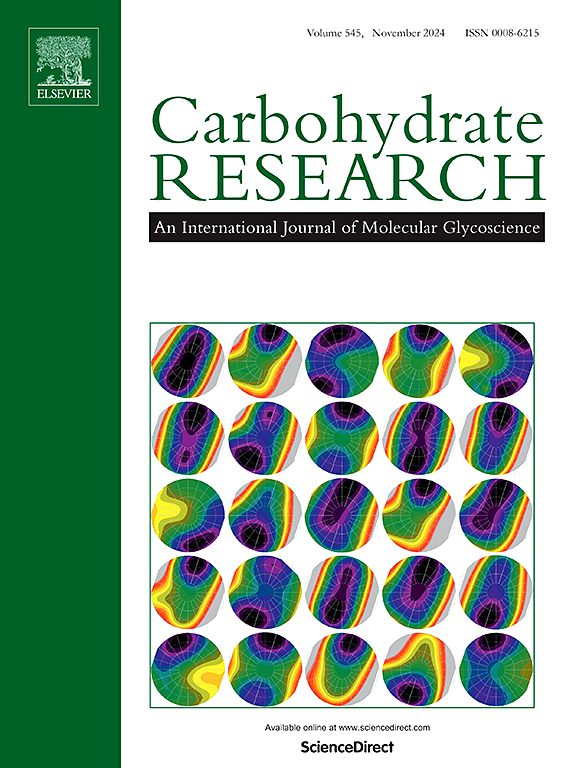新的肉桂酸糖酯作为潜在的UVB过滤器:合成、细胞毒性和理化性质。
IF 2.4
3区 化学
Q3 BIOCHEMISTRY & MOLECULAR BIOLOGY
引用次数: 0
摘要
肉桂酸糖酯衍生物(CASEDs)是一类具有多种生物活性的天然化合物。然而,到目前为止,还没有关于它们在防晒霜配方中使用的报道。在这里,我们描述了一系列新的肉桂酸酯的合成葡萄糖(4a-g),核糖(4h)和乳糖(4i)从各自的缩醛3开始。后者是通过烯烃氧化烷氧羰基化反应得到的。对于所有化合物3和4,记录了紫外可见光谱,并评估了亲脂性(即clogP)和细胞毒性。除一种外,所有合成的化合物在测试浓度下均无细胞毒性,并且正如预期的那样,吸收光谱仅取决于芳香环上的取代基。最后,特别合成的化合物3k具有苯基环上的4-甲氧基取代基和1,2- o -异丙基核糖片段,为可能用作防晒霜提供了最有希望的结果。事实上,它的防晒系数(SPF),在体外计算,比乙基己基甲氧基肉桂酸(EHMC)更高,它已经被用于防晒产品。此外,3k表现出比EHMC更强的抗氧化性能,有效地保护角质细胞免受h2o2诱导的氧化损伤。同时,它没有细胞毒性作用,并保留了细胞代谢活性和蛋白质含量。基于这些结果,我们相信CASEDs可以在护肤和化妆品领域找到有效的应用。本文章由计算机程序翻译,如有差异,请以英文原文为准。

New cinnamic acid sugar esters as potential UVB filters: Synthesis, cytotoxicity, and physicochemical properties
Cinnamic Acid Sugar Ester Derivatives (CASEDs) are a class of natural compounds that exhibit several interesting biological activities. However, to date, no examples of their use in sunscreen formulations have been reported. Here, we describe the synthesis of a series of novel cinnamic acid esters of glucose (4a-g), ribose (4h) and lactose (4i) starting from the respective acetals 3. The latter were obtained through oxidative alkoxycarbonylation of olefins. For all compounds 3 and 4, UV–Vis spectra were recorded and lipophilicity (i.e., clogP) and cytotoxicity were evaluated. All but one of the synthesized compounds were found to be non-cytotoxic at the concentrations tested and, as expected, absorption spectra depended only on the substituents on the aromatic ring. Finally, the ad hoc synthesized compound 3k, featuring a 4-methoxy substituent on the phenyl ring and a 1,2-O-isopropylidene ribose moiety, provided the most promising results for a possible use as a sunscreen. Indeed, its Sun Protection Factor (SPF), calculated in vitro, was higher with respect to that of ethylhexyl methoxycinnamate (EHMC), which is already utilized in sun care products. Moreover, 3k showed greater antioxidant properties than EHMC, effectively protecting keratinocytes against H2O2-induced oxidative damage. At the same time, it showed no cytotoxic effects and preserved cellular metabolic activity and protein content. Based on these results, we believe that CASEDs could find valid applications in the skincare and cosmetics sectors.
求助全文
通过发布文献求助,成功后即可免费获取论文全文。
去求助
来源期刊

Carbohydrate Research
化学-生化与分子生物学
CiteScore
5.00
自引率
3.20%
发文量
183
审稿时长
3.6 weeks
期刊介绍:
Carbohydrate Research publishes reports of original research in the following areas of carbohydrate science: action of enzymes, analytical chemistry, biochemistry (biosynthesis, degradation, structural and functional biochemistry, conformation, molecular recognition, enzyme mechanisms, carbohydrate-processing enzymes, including glycosidases and glycosyltransferases), chemical synthesis, isolation of natural products, physicochemical studies, reactions and their mechanisms, the study of structures and stereochemistry, and technological aspects.
Papers on polysaccharides should have a "molecular" component; that is a paper on new or modified polysaccharides should include structural information and characterization in addition to the usual studies of rheological properties and the like. A paper on a new, naturally occurring polysaccharide should include structural information, defining monosaccharide components and linkage sequence.
Papers devoted wholly or partly to X-ray crystallographic studies, or to computational aspects (molecular mechanics or molecular orbital calculations, simulations via molecular dynamics), will be considered if they meet certain criteria. For computational papers the requirements are that the methods used be specified in sufficient detail to permit replication of the results, and that the conclusions be shown to have relevance to experimental observations - the authors'' own data or data from the literature. Specific directions for the presentation of X-ray data are given below under Results and "discussion".
 求助内容:
求助内容: 应助结果提醒方式:
应助结果提醒方式:


